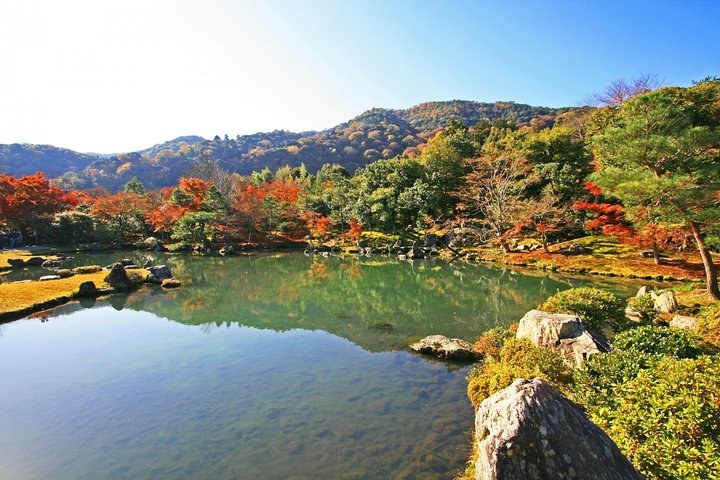Explore Hiroshima’s spirit with a guided tour of Peace Memorial Park, historic sites, and serene gardens. Discover history, culture, and transformation.
Explore Hiroshima’s spirit with a guided tour of Peace Memorial Park, historic sites, and serene gardens. Discover history, culture, and transformation.
- Hiroshima Peace Memorial Park - Hiroshima Peace Memorial Park and Museum is the cornerstone of this journey, embodying the city’s resilience and unwavering dedication to peace. This historic site stands as a living testament to the events of August 6, 1945, when the first atomic bomb devastated Hiroshima. Begin at the iconic Atomic Bomb Dome, a…
-
Hiroshima Peace Memorial Park - Hiroshima Peace Memorial Park and Museum is the cornerstone of this journey, embodying the city’s resilience and unwavering dedication to peace. This historic site stands as a living testament to the events of August 6, 1945, when the first atomic bomb devastated Hiroshima. Begin at the iconic Atomic Bomb Dome, a UNESCO World Heritage Site, preserved to honor the memories of those lost and to inspire a world free of nuclear weapons.
The park, designed with symbolism in every corner, offers moments for reflection as you explore its it with your local knowledgeable Hiroshima guide. The Peace Memorial Museum provides a poignant and respectful narrative of Hiroshima’s history, featuring exhibits that include personal artifacts and stories of survival. Today, the park is not only a place of remembrance but also a vibrant gathering space for festivals and ceremonies, showcasing the city’s spirit and hope for the future. -
Hiroshima - Hiroshima’s shotengais are a vital part of the city’s fabric, offering a real glimpse into local life. Shotengais (long, often covered shopping streets) are traditional areas lined with a variety of shops and eateries, catering to everyday needs. These traditional shopping streets have been a fixture of the city for generations, surviving both the devastation of the past and the ongoing changes of modern life. As you walk through, you’ll encounter a mix of old and new—shops selling everything from everyday goods to local specialties.
These bustling streets are where the people of Hiroshima go about their daily routines, whether it’s shopping for groceries, enjoying a casual meal, or chatting with local vendors. The food here isn’t just for show; it’s part of the city’s everyday life, with dishes like Hiroshima-style okonomiyaki and street food. It’s a straightforward look at how the city operates and the blend of its historical past with its present-day vitality. -
Hiroshima Castle - Hiroshima Castle, also known as Carp Castle, is a striking symbol of the city’s pre-war heritage. Originally built in the late 1500s by the powerful feudal lord Mori Terumoto, the castle was a focal point of the city for centuries. However, like much of Hiroshima, it was destroyed in the atomic bombing of 1945. Today, visitors can explore the ruins of the castle, which include the remnants of the stone walls, moat, and foundation, providing a stark reminder of the city’s past.
The reconstructed Hiroshima Castle, which stands near the original site, offers a look at what the castle may have looked like before the bombing, though it is a modern reconstruction built after the war. The surrounding park, filled with cherry trees that bloom in spring, is a popular spot for locals to relax and reflect. The ruins, along with the reconstructed keep, offer a layered perspective of Hiroshima’s resilience, connecting the city’s rich feudal history to its post-war rebirth. -
Shukkei-en Garden - Hiroshima Castle, also known as Carp Castle, is a striking symbol of the city’s pre-war heritage. Originally built in the late 1500s by the powerful feudal lord Mori Terumoto, the castle was a focal point of the city for centuries. However, like much of Hiroshima, it was destroyed in the atomic bombing of 1945. Today, visitors can explore the ruins of the castle, which include the remnants of the stone walls, moat, and foundation, providing a stark reminder of the city’s past.
The reconstructed Hiroshima Castle, which stands near the original site, offers a look at what the castle may have looked like before the bombing, though it is a modern reconstruction built after the war. The surrounding park, filled with cherry trees that bloom in spring, is a popular spot for locals to relax and reflect. The ruins, along with the reconstructed keep, offer a layered perspective of Hiroshima’s resilience, connecting the city’s rich feudal history to its post-war rebirth.

- Entry fees to all attractions visited on tour
- Knowledgeable guide fluent in English and Japanese
- Entry fees to all attractions visited on tour
- Knowledgeable guide fluent in English and Japanese
- Meals snacks or shopping
- Meals snacks or shopping
Welcome to Hiroshima, a city where a rich history meets a lively present. On this four-hour tour, immerse yourself in Hiroshima’s history, culture, and beauty. Your guide will take you through the Peace Memorial Park and Museum, where you can reflect on the Atomic Bomb Dome and exhibits that share the city’s message of peace. Then, wander through…
Welcome to Hiroshima, a city where a rich history meets a lively present. On this four-hour tour, immerse yourself in Hiroshima’s history, culture, and beauty. Your guide will take you through the Peace Memorial Park and Museum, where you can reflect on the Atomic Bomb Dome and exhibits that share the city’s message of peace. Then, wander through Hiroshima’s shotengais—traditional shopping streets bustling with everyday life. Visit Hiroshima Castle, which has been rebuilt after the bombing, combining historical ruins with modern restoration. Conclude at Shukkeien Garden, a serene spot for quiet contemplation. This tour offers a meaningful journey through Hiroshima’s transformation, providing a deeper understanding of the city’s past and present. With time remaining in your day, explore central Hiroshima or venture to Miyajima Island for further discoveries.
For a full refund, cancel at least 24 hours before the scheduled departure time.
For a full refund, cancel at least 24 hours before the scheduled departure time.


















